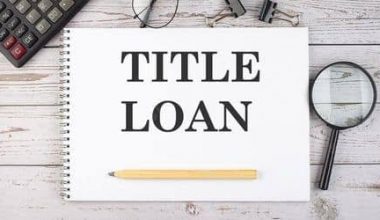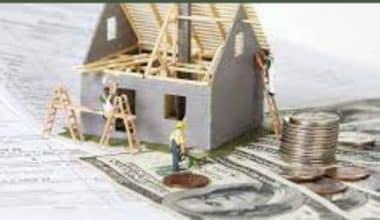Taking out a mortgage allows most Americans to purchase a home. Getting this type of finance, which has never been an easy process, has recently become significantly more difficult due to the rapid rise in interest rates. You might even worry if you can still get a mortgage and buy a house.
Don’t worry: obtaining a mortgage might be time-consuming and difficult, but we’re here to assist. This mortgage guide lays down each step of the process so you know what to expect.
How to Get a Mortgage Loan
When you’re ready to apply for a loan, you’ll need to make sure you have all the paperwork you need. You can expect the following when you apply for a mortgage loan:
#1. Get Your Mortgage Approved Ahead of Time
When you get preapproved, a lender tells you how much money you can borrow from them ahead of time. When you apply for preapproval, a lender will look at your income, assets, and credit history to figure out how much money you can borrow from them. And they will decide what your interest rate will be. Getting preapproved for a loan will make it easier for you to find a home and make you more appealing to sellers and real estate agents.
#2. Fix Up Your Credit
A credit score in the 700s shows that you have a good history of paying your bills on time, which is what mortgage lenders want to see. Rod Griffin, senior director of public education and advocacy at Experian, one of the three major credit reporting agencies, says, “Having a strong credit history and credit score is important because it means you can get a loan with good rates and terms.”
#3. Get an Approval Letter
After you choose the best mortgage option for your needs, you can check your online account. If so, you can use the Prequalified Approval Letter that we will give you to start looking for a home. If you want to make your approval even stronger, talk to a Home Loan Expert and ask for Verified Approval.
#4. Give a Deal on a Piece of Property
Now comes the fun part, which is picking out the perfect home. If this is your first time buying a home, it’s a good idea to talk to a real estate agent in your area. However, working with a real estate agent is the best way to find homes that are in your price range and meet all of your needs.
#5. Taking a Look at Everything
During the verification phase, an underwriter will look at your assets and income in more depth. The information you gave in your application will be backed up by documents.
Lenders usually want proof of who owns a property and what its condition is. Also, part of the process is getting an appraisal, checking the title, and doing any other inspections that are required in the buyer’s state. You will be given a Closing Disclosure when the underwriting is done.
On your Closing Disclosure, you can see all the information about your loan, such as the interest rate, APR, down payment, and closing fees. If you applied for a loan and got a Loan Estimate three days later, the two documents should match up at closing.
#6. Closing
If your loan is approved, you will be asked to a meeting to close the deal. During closing, you can get answers to any questions you still have about your loan. Closing Disclosure, a photo ID from the government, and cash or a check for the down payment and other closing costs. However, after you sign the loan papers, you can say for sure that you are a homeowner.
What Are Mortgage Loan Lenders Looking For?
Mortgage companies like to work with people who are stable in their jobs, have good credit, and don’t have too much debt. When deciding whether or not to give you a loan, a mortgage lender will look at the following:
#1. Score for Credit
If you have a long history of making payments on time, a low credit utilization rate, a diverse credit profile, and few credit inquiries, you probably have a high credit score and can get a low-interest rate. Still, you can get a mortgage even if your credit score is low, so don’t rule out home ownership until you talk to a lender about your situation.
#2. Money and Work
Before giving you a loan, a mortgage lender will take a close look at your income and work history. You’re more likely to get a mortgage if you have a stable job and a good enough income to cover the monthly payments.
#3. Income-Debt (DTI) Ratio
Most of the time, lenders will look at a borrower’s debt-to-income ratio to see if they can afford the mortgage payment. A high debt-to-income (DTI) ratio can make it hard to get a mortgage, even if you make a good salary.
#4. Assets
The lending institution will look at the value of your assets, such as your main home, your second home, and your investments.
How to Get a Mortgage Loan Bad Credit
If you have a low credit score and can’t get a mortgage, have to pay a higher interest rate, or have to make a bigger down payment because of it, you have terrible credit. When applying for a conventional, FHA, VA, or USDA loan, a “poor” credit score means different things. Almost 93% of people who successfully buy homes have credit scores of 650 or higher.
Even if your credit score is low, you can still get a mortgage if you have a steady source of income, a small amount of debt compared to your income, and a big down payment. Still, if your score is below 500, you can expect to be turned down. Foreclosure and bankruptcy are two other big things that can hurt your credit score a lot and make it impossible to get a loan for at least a year, if not longer. The following are some tips for getting a mortgage loan even if you have bad credit:
#1. Learn About the Options You Have
If you can’t get a standard mortgage, you might be able to get a loan from the VA, the USDA, or the FHA.
#2. Avoid Giving up Too Soon
Before a lender says yes, you might hear a lot of “no.”
#3. See if a Mortgage Broker Can Help
Depending on your situation, they may be able to give you suggestions for good lenders. Lenders pay the mortgage brokers’ salaries, so borrowers don’t have to pay them.
#4. If You Want to Get a Mortgage, You Should Work on Your Credit for a Few Months
Paying down your credit card balances, making your payments on time, and disputing any mistakes you find on your credit report are all easy ways to raise your credit score.
#5. Get Together a Down Payment of at least 10%
Lenders will see you as less of a risk if you have more money invested in the game.
How to Get a Mortgage Loan After Foreclosure
But having a foreclosure on your credit report doesn’t mean you’ll never be able to own a home again. There is usually a grace period before you can buy another house, but this depends on the loan package you have. If you just started your waiting period or are already in the middle of it, the following tips will help you improve your chances of buying a mortgage loan after foreclosure.
#1. There Should Be No Mistakes on Your Credit Report
Get your credit report from one of the three main credit reporting agencies, Equifax, Experian, or TransUnion, and look it over for mistakes.
#2. When Bills Are Paid on Time
Most of your credit score (about 35% of it) is based on how reliable you have been in the past with making payments. However, the fact that you pay your bills on time every month is a big reason why a lender might or might not give you credit.
#3. Pay off Any Debts You Have Right Now
Your debt-to-income ratio (DTI) should be more important to you than your credit score. This is how much of your monthly gross income goes toward paying off your debts. In foreclosure, before giving you a loan, mortgage companies will look at this more than anything else.
#4. Save
Set up an emergency fund so you can make ends meet for three to six months without using credit cards or taking out more loans. If you decide to buy a property or a foreclosure mortgage loan again, don’t spend all of your money on it. That way, if things get hard, you’ll have something to fall back on.
How to Get a Mortgage Loan With Low Income
If you want to get a mortgage, you need to find a good balance between your debts, income, and down payment. You can make up for not having a stable income by putting more effort into other parts of your application.
Borrowers with low income should work on improving their debt-to-income ratio (DTI), which is the main thing holding them back from getting credit on a mortgage loan. Your debt-to-income ratio shows how much of your money goes toward paying off debt. Your DTI is 50% if you make $4,000 a month and pay $2,000 a month on your mortgage.
To get a loan, your debt-to-income ratio (DTI) should be 50% or less. However, this number can change depending on the lender and type of loan. Your debt-to-income ratio (DTI) shows how much you can spend on a house. This can make it hard for people with lower incomes to shop for a home. If the average price of a house in your neighborhood is more than $150,000 and your DTI only lets you borrow up to $150,000, you may have trouble finding an affordable home.
Read Also: 2023 Best Top Mortgage Lenders & Best Practices (Updated)
Lenders will look at your credit score and how much money you have saved for a down payment and closing costs. If you have a low income, you can improve your chances of getting a mortgage loan by doing the following:
- Cut back on how much of your income you use to pay off debt.
- You should figure out how much you will need for a down payment and closing costs, and then figure out how much you will need to save each month to get there.
- Raise your credit score to at least 620 by using less of your credit card’s available credit.
- Try to get loans from different places, but people with low incomes should go to credit unions.
- When you apply for a mortgage, it’s important to list all of your income, such as child support and disability payments.
- You might want to have someone else co-sign your mortgage with you.
How Do I Get a Mortgage, and What Paperwork Do I Need?
It’s a good idea to get organized before applying for a loan so that the process goes more smoothly. Let’s talk about the usual paperwork that needs to be filled out for a mortgage application.
#1. Profit and Loss Statement
Your lender will require numerous documents proving your income. You may need to show one or more of the following types of proof:
- At least the last two years’ worth of federal tax returns.
- Please send us your latest W-2 and pay stub.
- Statements of income and expenses (1099s) or tax returns (if self-employed).
- Documentation, like a divorce decree or a child support order, that says you’ll keep getting payments for at least three more years.
- Proof that you have been getting payments like alimony, child support, or other payments for at least six months.
#2. Proofs for Credit
Your lender will want to know if they can get your permission to check your credit record verbally or in writing. They will look at your credit report to see if there are any red flags, like recent bankruptcies or foreclosures, that could make it hard for you to borrow money. You should explain to your lender what happened that caused your low credit score and give them any proof they ask for. This shows the lender that the negative item on your credit record was just a one-time thing.
#3. Financial Documentation
During the process of checking the value of your assets, your lender may ask for the following:
- Validation of your bank and savings account balances for up to 60 days of transactions.
- Your savings or investment account’s most recent statement.
- Any proof that you recently sold something, like a copy of the title transfer if you just sold a car.
- Give proof of any gifts that were put into your account in the last two months, including the date and amount.
Your lender may ask for more proof of debts you already have, like college or car loans. You can make it much easier to get a mortgage loan if you work with your lender and give them any information they need as soon as you can.
How Can I Get a Mortgage Easily?
The following are;
- Carefully read your credit report.
- Improve your credit score.
- Determine your maximum housing budget.
- Choose a type of mortgage that fits your needs best.
- Get the documents you need for your mortgage application.
- Compare mortgage rates from different lenders to find the best one.
- If you can, try to get pre-approved.
How to Get a House on a Mortgage in the USA?
The following are;
- Good score.
- Cash that can be shown.
- Income-to-debt (DTI) ratio.
- Money is needed.
- Carefully read your credit report.
- Improve your credit score.
- Before you look at houses, think about how much you can spend.
What Happens After the Mortgage Is Approved?
When a loan is accepted, most lenders send out letters of commitment. The terms of your loan and mortgage are written out in this contract. You will be able to check out your loan’s APR and monthly payments. Conditions that need to be met before the closing will also be written down.
What Is a First Mortgage?
A first mortgage is the strongest lien on a piece of property. If the first loan that was used to buy the property goes into default, it will be paid off first, before any other loans or claims. First mortgages don’t always refer to the first mortgages people take out on their first homes. Instead, they mean the first mortgages taken out on any piece of real estate.
Why Is It Called a Mortgage?
The word “mortgage” comes from a Middle French term that was used in Britain during the Middle Ages. It means “death pledge,” which is how the pledge ends (dies) when the obligation is met or the property is taken back through foreclosure.
How Much Is My First Mortgage Payment?
Your initial mortgage payment will be the same amount as your regular mortgage payments going forward. If you got a mortgage for $350,000 with a 20% down payment and an interest rate of 6%, your payment would be about $1,678 a month (not including taxes and insurance).
How Do I Calculate My First Mortgage?
The cost of your mortgage depends on how much you borrow, how much interest you pay, and how long you have to pay it back. The formula for figuring out a mortgage is M = P [i(1+i)n] / [(1+i)n-1].
Conclusion
A mortgage loan is what makes it possible for most Americans to own their own home. Getting this kind of loan has never been easy, but the recent meteoric rise in interest rates has made it even harder. The first step is to try to get pre-approved for a mortgage. Getting preapproved saves a lot of time because it lets you know how much you can borrow before you start looking for a house. Once you’ve been pre-approved for a mortgage, you can start looking at houses and maybe even hire a real estate agent.
- HOW TO PAY OFF MORTGAGE IN 5 YEARS: A Comprehensive Guide
- MORTGAGE CREDIT SCORE: Minimum Credit Required To Buy A Home
- Secondary Mortgage Market: Step By Step Guide On How It Works
- REQUIREMENTS TO BUY A HOUSE: A Step-By-Step Guide
- BACK END RATIO: What It Is and How To Calculate It
- MORTGAGE RATES FOR INVESTMENT PROPERTY: Current Mortgage Rates for Investment Property
- What Is a Short Sale? Guide To The Short Sale Process
- SHORT SALE: Definition, Process & Benefits






